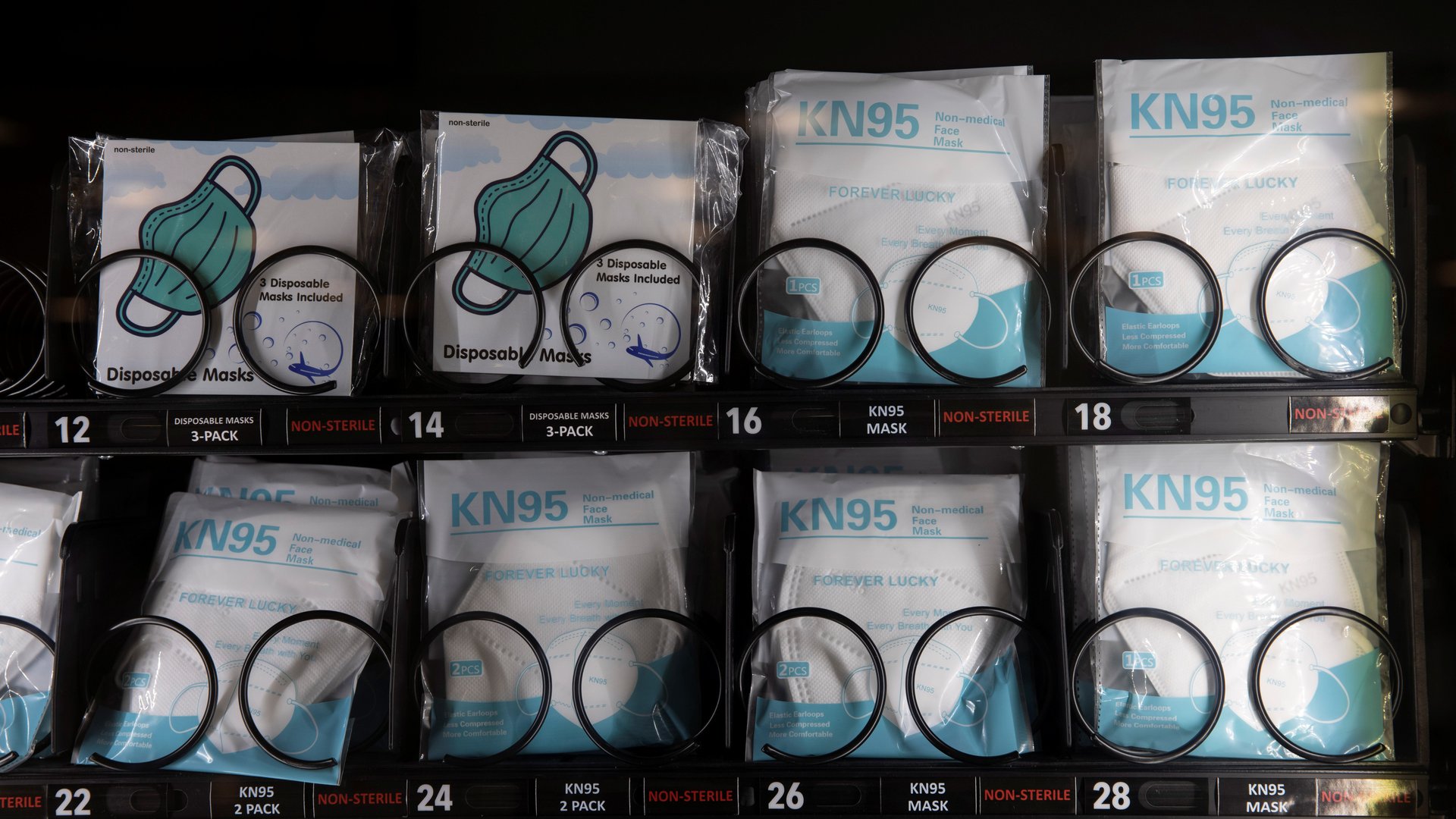Why don’t we have an ideal mask yet?
Global coronavirus deaths have been falling—but scientists are worried that new variants of the virus may reverse those trends.


Global coronavirus deaths have been falling—but scientists are worried that new variants of the virus may reverse those trends.
Some of these new variants, like one from the UK, are more infectious and take a smaller viral load to cause a full body invasion. Scientists at the US Centers for Disease Control and Prevention have started researching whether or not wearing two masks may be more beneficial than one alone. Some high-profile figures, including Anthony Fauci, the head of the US National Institute of Allergy and Infectious Diseases, are already doubling up.
Theoretically, wearing one masks over another could help protect you from incoming droplets, or others from the ones you expel. But there’s a limit to their utility depending on the kinds of masks used for layering. Scientists are working to set global standards for the myriad kinds of masks available to help consumers make those decisions—but until then, here’s what you need to know to make your own masking decisions.
Fuller filtration—to a point
The added benefit of layering one mask over another is the added filtration potential. The more filters between your airways and the outside world, the less likely you are to encounter a pathogen-containing particle.
These benefits are additive. “It’s increasing your protection by the added benefit of that surgical mask,” says Christopher Zangmeister, a scientist who studies aerosols at the US National Institutes of Standards and Technology. Put another way, a double-layer cloth mask with a surgical mask could have roughly the same kind of filtration as a three-layered cloth mask akin to the ones the World Health Organization has previously recommended. Depending on the protection provided by your original mask, it may meaningfully increase your filtration—or it may not.
But at a certain point, there’s a tradeoff between more filtration and overall protection. For one thing, more layers may be less comfortable—which could lead to dubious face-touching or adjusting. The more you touch your face, the more likely a particle on your hands could reach its way into your airways.
And there’s another problem: too much filtration becomes unbreathable. “Are you breathing through the material, or are you breathing through the gaps in the material?” Zangmeister says. If you’re breathing through the gaps in between the mask and your face, you’re not getting any filtration production at all. In lab settings, Zangmeister and his team have found these areas where air escapes tend to be behind the cheeks, or right above the bridge of the nose, which can look like a droplet exhalation geyser, he says.
There’s a simple test to see if your masks aren’t actually working as a filter, Zangmeister says. Go outside on a cold day, and wear either glasses or sunglasses and breathe for 30 seconds. If your breath fogs the glasses, too much air may be leaving (and therefore coming in) above your nose, rather than through the mask itself.
Standardizing filtration
It’s frustrating that at this point in the pandemic, we still don’t have an ideal mask. Masks vary widely depending on who manufacturers them. Some even fraudulently boast they can filter more than they actually do.
The problem is there is no universal standardization for commercial masks. In the US, the Food and Drug Administration approves medical-grade masks while the Occupational Safety and Health Administration certifies and tests professional grade masks for people like firefighters or construction workers. But there’s no single authority that makes an easy-to-read standard for masks for the general public.
ASTM International 1, a global regulatory agency that comes up with all kinds of guidelines, is currently working on these standards. Zangmeister, whose current research could support their ultimate decisions, says the group could release a set of standards by mid-March. They’d appear like a simple number or lettering system on mask packaging to guarantee a certain level of protection.
It may feel late in the pandemic for a set of global, commercial mask standards, but normally this process takes years, not months. When making these considerations, scientists have to consider the diversity of face shapes as well as mask materials. All those differences mean there’s no easy way to determine exactly which material will offer what specific level of protection.